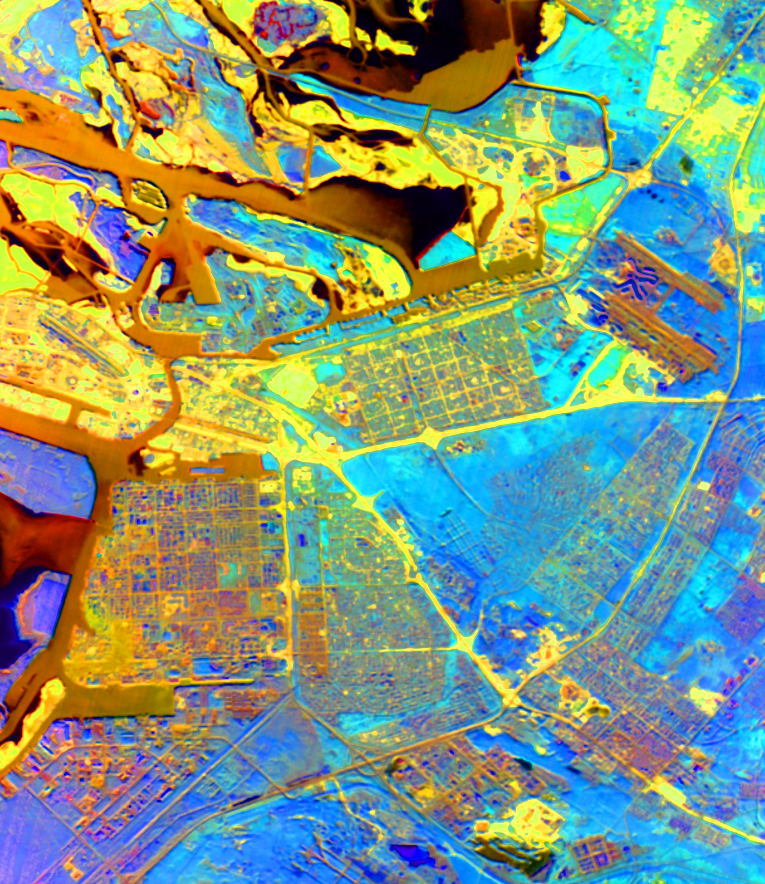Eight Companies Chosen for Commercial Small Satellite Services

—
NASA’s Recent Contract Awards: A New Era for Earth Observation Through Commercial Data
In a groundbreaking move that embodies the spirit of innovation and collaboration, NASA has recently announced the selection of eight companies for its Commercial SmallSat Data Acquisition Program (CSDA). This initiative, designed to bolster Earth science research, promises a maximum cumulative value of 6 million. The contracting process was marked by excitement and anticipation, culminating in the official announcement made by NASA on September 6, 2023.
The eight companies selected for this prestigious contract are BlackSky, Iceye US, MDA, Pixxel, Planet, Satellogic, Teledyne Brown Engineering, and Tomorrow.io. These companies will work closely with NASA, contributing valuable Earth observation data and services for the next five years, extending through November 15, 2028. Each of these organizations brings unique technological solutions and expertise to the table, enhancing the capabilities of NASA’s Earth observation programs.
A Quick Look at the Participants
While many of this year’s chosen participants are veterans in the CSDA framework, having provided data and services over the years, it’s noteworthy that this marks the first time for Pixxel to join the program. Known for their advanced hyperspectral imaging technology, Pixxel is poised to offer NASA powerful new tools to monitor the Earth’s health.
Planet and the other companies have long been involved with the CSDA, showcasing a strong track record of delivering data crucial for various applications, from climate change studies to disaster management and environmental monitoring. For instance, Planet, with its extensive fleet of satellites, has been actively providing critical data since the inception of the CSDA in 2017.
The Transformative Potential of Hyperspectral Imaging
Pixxel’s selection stands out not only because it’s their CSDA debut but also due to the game-changing technology they bring. Hyperspectral imaging, a process that captures and processes information across various wavelengths of light, can reveal otherwise hidden details about the Earth’s surface, including vegetation health, water quality, and pollution levels.
Awais Ahmed, co-founder and CEO of Pixxel, expressed the significance of this partnership with NASA: “Being selected for this NASA contract is a monumental achievement for Pixxel and further validates that hyperspectral imaging will be integral to the future of space-based Earth observation.” His enthusiasm reflects a broader optimism in the space-tech community, as many believe such advancements are key to tackling pressing environmental challenges.
A Look Back: Previous NASA Contracts
This announcement follows last year’s selection of seven companies for the equivalent CSDA contracts, including well-known entities like Airbus DS Geo, Capella Space, GHGSat, Maxar Intelligence, PlanetiQ, Spire Global, and Umbra Lab. The ongoing interest from multiple companies highlights the increasing importance of commercial partnerships in the scientific community, as government agencies seek to leverage innovative private-sector solutions to better monitor and understand our planet.
These contracts are more than just formal business agreements; they represent a shift toward collaborative models in satellite data acquisition, allowing NASA to tap into a wealth of resources and expertise that private companies bring to the table. Such partnerships are crucial for comprehensive analysis and more informed decision-making in Earth sciences.
The Bigger Picture
The move by NASA to engage with a variety of commercial companies aligns with a broader trend in the space industry. As technology improves and the cost of launching satellites decreases, more companies are emerging with innovative solutions that extend beyond traditional space exploration and research. This shift not only fosters competition but also drives innovation, pushing the boundaries of what satellite data can achieve.
Moreover, as the world grapples with increasing environmental concerns, the demand for accurate and real-time data has never been greater. From understanding climate change impacts to managing natural resources and responding to disasters, the utility of Earth observation data continues to grow.
The Future of Earth Observation
Looking ahead, the integration of commercial satellite data into NASA’s Earth scientific endeavors is expected to yield significant advancements. It enhances the agency’s capability to gather and analyze data in ways that were previously unimaginable. This collaboration could lead to breakthroughs in how we monitor the health of our planet, ultimately aiding in global sustainability efforts.
In conclusion, NASA’s recent contract awards signify a crucial step toward harnessing commercial satellite capabilities for scientific research, particularly in the realm of Earth observation. Companies like Pixxel are at the forefront of this transformation, promising to provide valuable insights that can address some of the most pressing environmental issues of our time.
As we move forward, the collaboration between NASA and commercial entities may well redefine our understanding of the Earth and pave the way for a more sustainable future.
—
Tags: #NASA #EarthObservation #SpaceTechnology #CommercialSatelliteData #UAE #BusinessNews #EconomyNews
—
This blog post expands on the recent developments regarding NASA’s contracts and their implications for Earth observation, making it a substantial read suitable for optimizing search engines.







